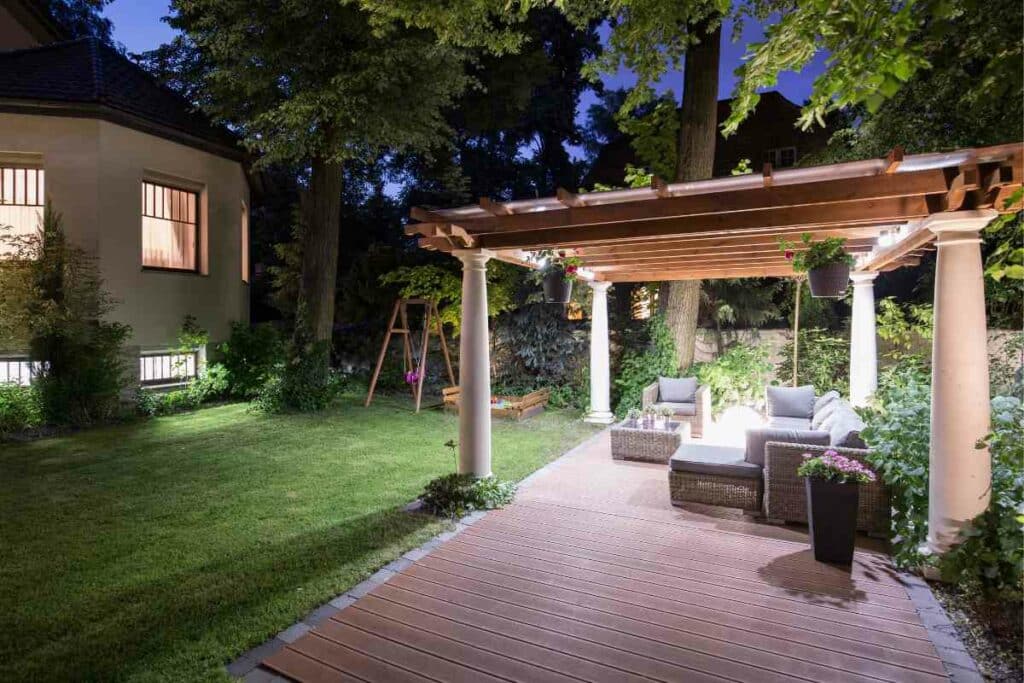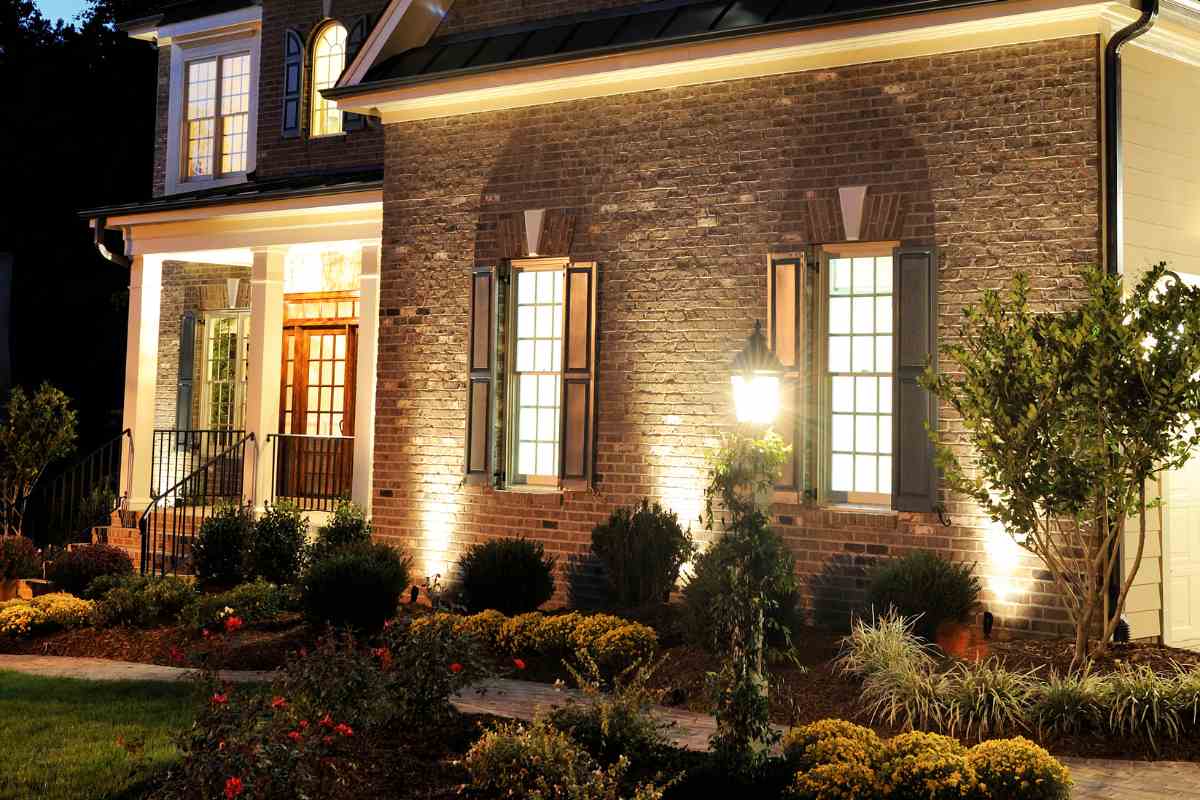Landscape lighting can enhance the beauty of your property, extending the allure well into the nighttime hours.
Among the various techniques used to bring light to our outdoors, two approaches are common; uplighting and downlighting. Each has its distinct effect and purpose.
To better understand these techniques, let’s delve into some fundamentals.
The terms “downlighting” and “uplighting” describes the direction in which the light is cast. With uplighting, the light fixtures are positioned below the subject to be lit, casting light upward. Meanwhile, downlighting involves placing fixtures higher up, on structures such as trees, eaves, dormers, or pergola beams, casting a pool of light downwards.
Uplighting
As mentioned, uplighting involves strategically placing a light fixture near the object to be lit, casting the light upwards.

This lighting technique captures the inherent beauty of the subject being lit drawing the eye upward
It works wonders for highlighting trees, sculptures, architectural features, and water elements. By uplighting them, their exquisite details and textures are brought to the forefront.
Depending on how the technique is employed, it can evoke drama, define a space or create a captivating backdrop.
Below are some features that can greatly benefit from uplighting;
- Trees: Uplighting can be employed to showcase the beauty of a tree, illuminating the trunk from the ground up. This emphasizes the texture, pattern, and color of the trunk while casting a gentle glow on the canopy from within.
- Architectural uplighting: By grazing the exterior of your house, particularly if it features a textured surface like stone, brick, or stucco, you can enhance the texture in a way that wouldn’t be possible with a wall wash.
- Other garden features: Uplighting can also be used to accentuate statues, elegant fountains, specimen plants, hedges, or topiary. It infuses your garden with a touch of drama and highlights these unique elements.
Downlighting
In contrast, downlighting illuminates the space and garden features from above casting a pool of light below.
The light fixture can be discreetly tucked high up on a tree, eave, or dormer of your house, a beam on a pergola, or any other high structure. The higher the light source is placed, the wider the area of illumination.

This approach works wonders for lighting walkways, terraces, patios, outdoor dining areas, driveways, water features, and garden beds. You can ensure safe navigation along paths, enhance visibility during alfresco dining, carry tasks outdoors after dark, and eliminate dark areas that may pose hazards.
For a natural effect, it is recommended to conceal the light fixture to create a seamless and natural effect. The focus should be on the illuminated features other than the light source itself.
Below are some features that can benefit from downlighting;
- Outdoor dining and seating: Mounting downlights on a house, overhead pergola beams, or trees can provide subtle lighting on a patio or terrace, serving both functional purposes for cooking and serving as well as ensuring safe movement.
- Beds of low-growing plants: Downlighting from above can be used to highlight the beds of beautiful perennials, showcasing their beauty even after dusk.
One popular effect created by downlighting is moonlighting. Moonlighting aims to simulate the ambiance of the moon even when the moon is absent.
A luminaire is mounted high up casting a gentle glow of light below usually through a tree canopy and branches creating a dappled effect on the surface beneath.
Patios, especially those with trees overhead, especially lend themselves well to moonlighting. Additionally, swimming pools and other water features are a natural fit for moonlighting bringing out their sparkle after dark.
Combining Up lights & Downlights
There is no need to limit yourself to either downlighting or uplighting.
A well-lit garden should incorporate layers of light including uplighting, downlighting, and cross-lighting among others to provide general ambient, task, and accent lighting.
Accent lighting is used to accentuate features and focal points that make the landscape unique such as statuary.
These effects should intersect and work together in harmony resulting in a balanced illumination.
Combining downlighting and uplighting eliminates any visual disconnect that may arise by only using one approach. By understanding your space and the strengths of each lighting effect, you can create a seamless and unified lighting effect that is both stunning and inviting to look at.
The goal is to avoid a flat and two-dimensional scene by creating depth, layers, and contrast using multiple light sources to create different scenes.
